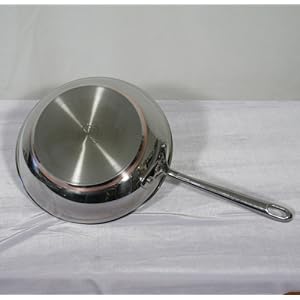Hi I am planing to remodel my kitchen. I will go with "gas" range/cooktop. As far as oven a good electric convection.
This is my thought for stove/cooktop. Any brand will do it. as long they have the power between 9,000-16,000 BTU. A lot of people really like Blue Star and Wolf. Blue Star had that 22,000 BTU, but Wolf is only up to 18,000 BTU. I use MAYTAG range, and work fine most all my cooking. I have no idea BTU's on mine. For 8 year I never have a single problem, although I only started to use the range heavily in the last 3 and a half years. If I need to do a stir-fry, I use an outdoor portable stove. It claim could go up to 130,000BTU (I dough it, but for $150 it do the job well.) Oven is another story. My oven temp is off irregularly.
Is $2,500 cooktop will get a better result then the $800? In my limited experience, I don't think so. Anyway, I would like to get some input for some of more experience cooks and chefs on my view.
Thanks
This is my thought for stove/cooktop. Any brand will do it. as long they have the power between 9,000-16,000 BTU. A lot of people really like Blue Star and Wolf. Blue Star had that 22,000 BTU, but Wolf is only up to 18,000 BTU. I use MAYTAG range, and work fine most all my cooking. I have no idea BTU's on mine. For 8 year I never have a single problem, although I only started to use the range heavily in the last 3 and a half years. If I need to do a stir-fry, I use an outdoor portable stove. It claim could go up to 130,000BTU (I dough it, but for $150 it do the job well.) Oven is another story. My oven temp is off irregularly.
Is $2,500 cooktop will get a better result then the $800? In my limited experience, I don't think so. Anyway, I would like to get some input for some of more experience cooks and chefs on my view.
Thanks

